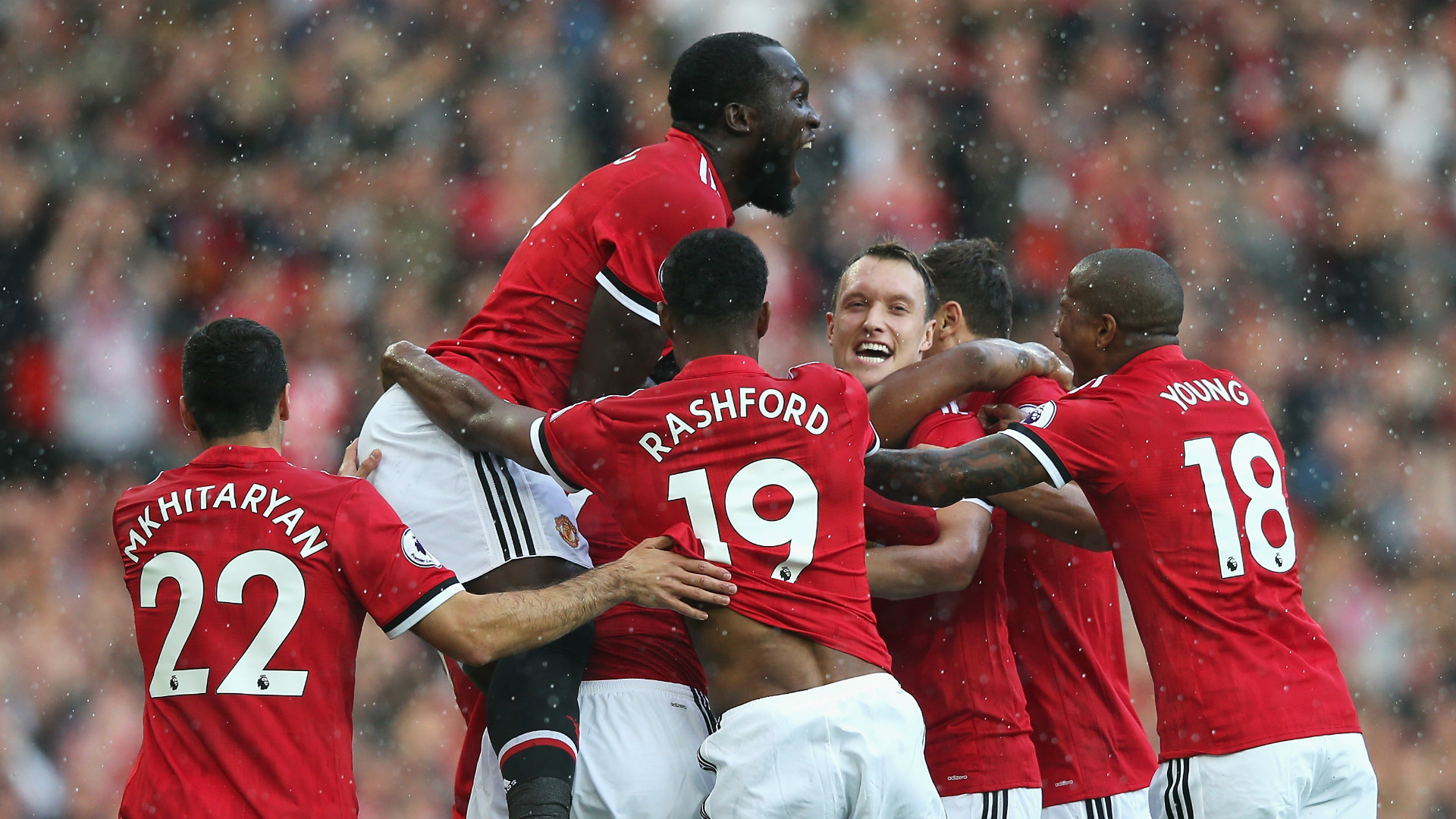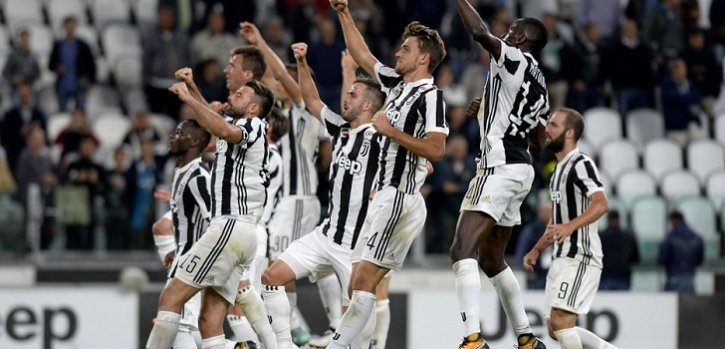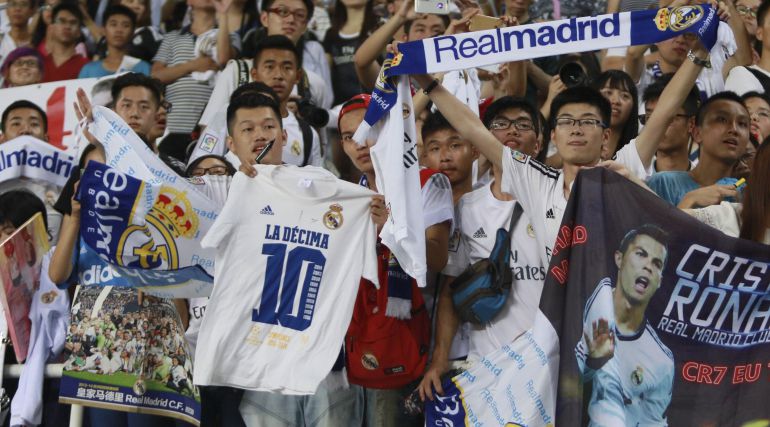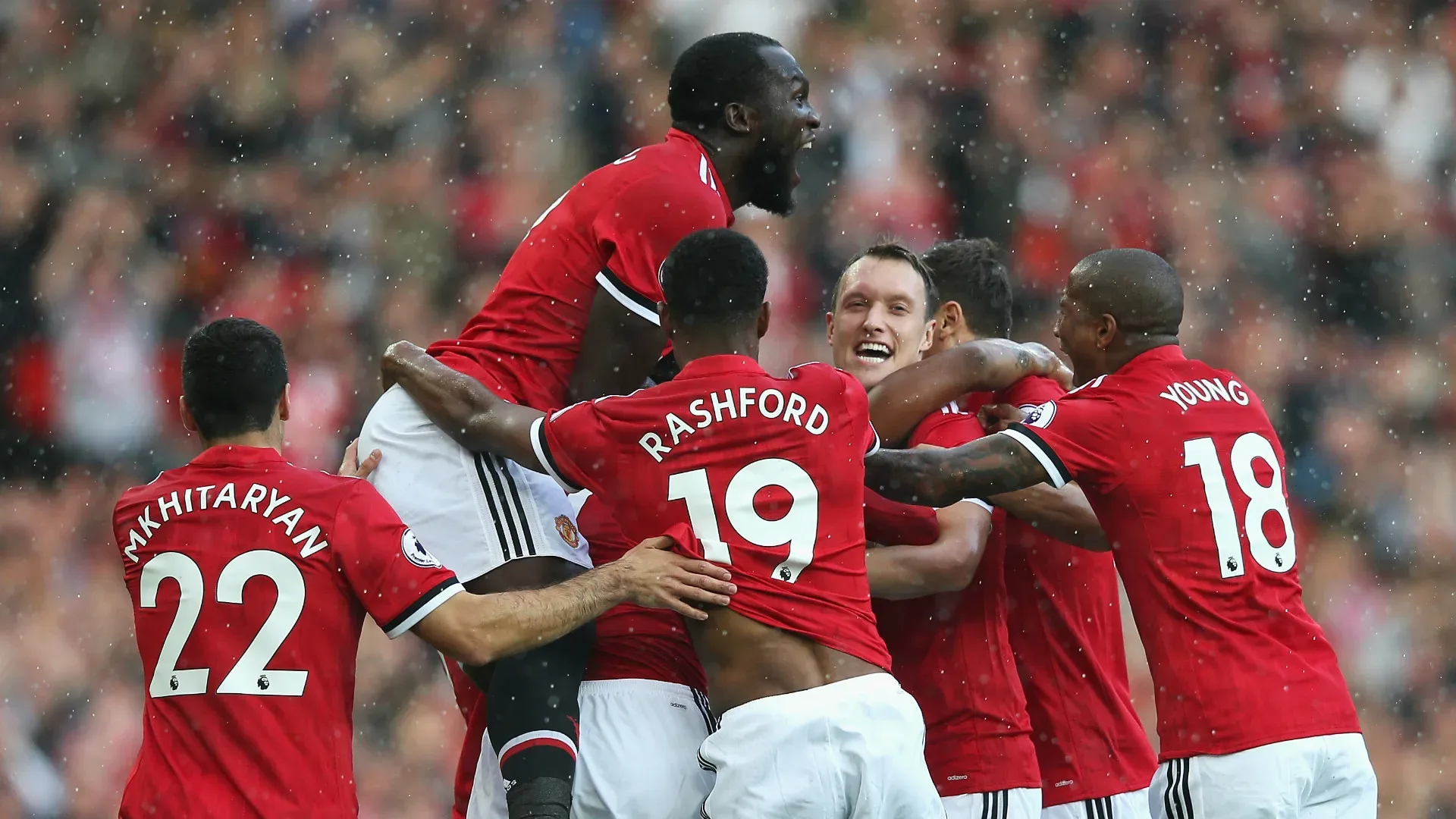
AUTHOR: NEIL JENSEN
Walk around the market in central Marrakech and, as well as traditional items such as leatherwear, hand-beaten metal objects and various exotica, you will find stalls devoted to football shirts, with Manchester United, Barcelona, Real Madrid and Bayern Munich, among others, fighting for customer attention. If you venture into the back streets, you will undoubtedly come across a young boy on a scooter, weaving through the dark, scented passages, wearing an AC Milan or Liverpool tracksuit. In cities with a long and deep cultural history, evidence of the power of the global football brand is easily discovered.
INTERNATIONAL BRAND, INTERNATIONAL CLUB
The world’s leading clubs, all European, are building global franchises. It began some years ago with overseas tours that were a combination of diplomatic mission, money-making fixtures and, more recently, expansion of the brand name. This has accelerated in the past decade in the post-financial crisis environment. It is no coincidence that football, just like the financial world, has depended upon the enhanced growth of emerging markets like China and India to grow and build a worldwide presence. Equally, Asia, the Middle East and Russia have all been instrumental in changing the dynamic in club ownership. Football brands, especially among the elite bracket of clubs, are most definitely aimed at global reach as well as domestic and international success.
The pursuit of creating an international brand looks to expand beyond traditional markets. Bryn Anderson of Brand Finance explains the importance of a growth strategy of this type: “Growth for football clubs in their domestic market is tough and can be expensive. It involves building larger stadiums, competing for bigger and better sponsorship and partner arrangements and initiating new and innovative commercial opportunities.”
Certainly, the rise of the Premier League, Bundesliga, La Liga and Serie A in terms of global appeal has allowed clubs from these leagues to access greater commercial opportunities and build a more international brand profile. When Manchester United travel to the US and Asia, where their reputation has grown significantly, they are greeted with mild hysteria by enthusiastic fans. Manchester United may be at the forefront of this industry, but the Premier League, generally, is eagerly supported across the globe. “The trajectory of football popularity globally, and particularly the Premier League, is a sharp incline. The US, India and China markets are all at a relatively early stage of their development and here lies an opportunity for the world’s largest clubs to gain new fans and commercial deals in new and exciting markets,” says Anderson.

BUILD THAT BRAND
The so-called “big five” leagues have the upper hand over other domestic competitions in terms of excitement and marketing power. This allows top-tier clubs from these leagues to offer fans high-class entertainment with the world’s leading players on show, something that small domestic clubs in a developing market cannot hope to match.
Supporters from smaller football nations look towards these clubs and leagues because they cannot find the same closer to home. “Many global fans live in countries with small-scale leagues or very little professional football, this means they need to go elsewhere to find football at the highest level. Naturally, they turn to the European giants and how they choose which league or club to follow depends on various factors – performance, players, whom their friends and family support and other considerations,” says Anderson.
So the chance is there for clubs to connect with these audiences. How, then, does a club go about building an international brand presence?
Historically, fans have been won through some sort of geographical link, for example, a club like Burnley in England has a fanbase that, mostly, will comprise people who have previously lived or have some form of connection with the club. By contrast, global fans frequently base their allegiance on an emotional connection with the town or the club and its international brand. Anderson believes there are five main areas that clubs need to consider: engagement, including the right communication channels; sponsorship – the right sponsors with alignment to club values; performance on the field; atmosphere and passion of the fans; and relationships with the media, licensors, regulators, investors and other clubs.
The importance of a club choosing the right partners has increased over the past few years, brand names become connected with each other, so a poor selection can have a negative impact on a club’s reputation. Equally, a corporate can gain significant traction for linking-up with a popular football club or player.
Anderson underlines that developing a strong international brand is an ongoing exercise: “All-year-round activity provides content for fans to engage with, whether it is on the pitch, through social media or online. The successful global football brands invite the audience to take part and make people feel they are part of the bigger picture through their culture and identity.”

A CLOSED SHOP?
At present, power lists such as those produced by professional services companies like KPMG, Deloitte and others, list the same names near the top of the rankings. The places change, but essentially, everyone is aware just who are the wealthiest clubs and the strongest international brands in world football. It is difficult to see how this will change, the hierarchy seems established. Anderson points out, however, that the Premier League’s upper echelons used to be referred to as the “big four” (Chelsea, Arsenal, Manchester United and Liverpool), but four has become six with the addition of Manchester City and Tottenham. Has it become something of a closed shop?
“It would certainly take something special to change this,” he says. “But it is not a closed shop. While many clubs have solidified their positions among the world’s elite, things can change very quickly. Over the past decade, major powerhouses like AC Milan and Inter have faded from the picture and look further back and two-time European Cup winner Nottingham Forest have declined and been absent from the Premier League since 1999.”
Conversely, the emergence of Manchester City, Leicester and Paris Saint-Germain demonstrate that football can still spring surprises, but transitioning to “super club” status takes more than good fortune. “The ability for a club to break into the small group of football giants starts with investment. Both Leicester and Manchester City have enjoyed significant investments, which has helped them achieve their recent success, but sustained success over a long period is required for them to become truly iconic. They are heading in the right direction, but it takes time,” says Anderson.
ALL ABOUT FOOTBALL…AND THE INTERNATIONAL BRAND
The Premier League clubs and huge names like PSG are in the upper quartile of the game, but what future is there for smaller clubs? On-pitch performance is a good starting point, but as Anderson says, this is closely correlated to commercial success. It is not quite “chicken and egg”, but the two are undoubtedly indelibly linked. “Performance on the field, coupled with responsible fiscal management will make smaller clubs more attractive to investors, enabling them to invest in facilities and work their way through the leagues. This in turn gives them the chance to attract better players, more fans and to generate higher revenues,” insists Anderson.
Although football is a game driven by emotion, often resulting in knee-jerk decision-making, a football club is a business. It is also a fiercely competitive industry where the international brand dominates – not unlike any other business sector. Fans are often quick to judge decisions made by the people running clubs, for example, a small club selling a key player to balance the books will receive criticism from some of its followers. Yet, these decisions are often made out of necessity.
Anderson does not fear that football will become merely an international brand-led sport rather than what happens on the field of play, although there is little denying that the modern football world has become one of high expectation and high financial stakes. “It is true that the two aspects of football have a symbiotic relationship and are strongly inter-linked. Performance has a commanding influence on a club’s brand, meaning that if the quality of performance diminishes, so too will the brand value of the club.”
Neil Jensen is a freelance business and football writer based in the UK. His clients include major financial institutions, football business consultancies and various newspapers and magazines. He is also the editor of the popular website, Game of the People, rated one of the top 100 football sites in the world.

